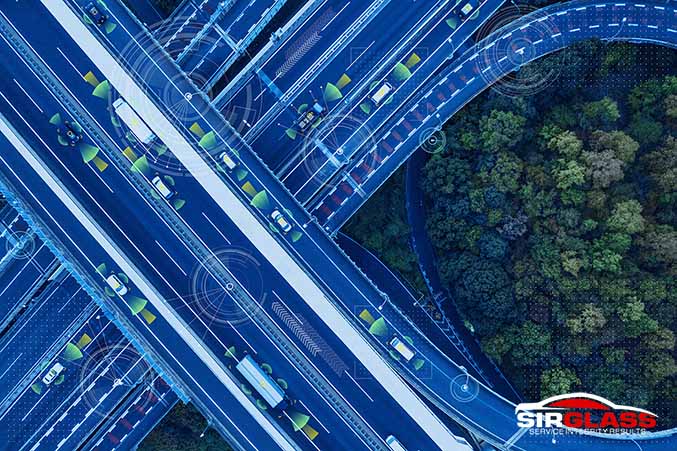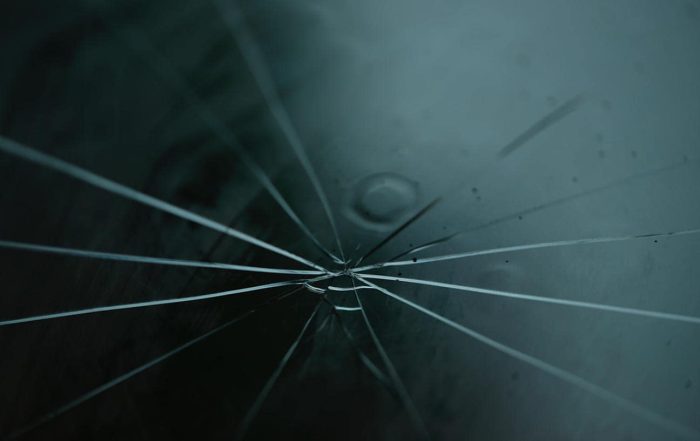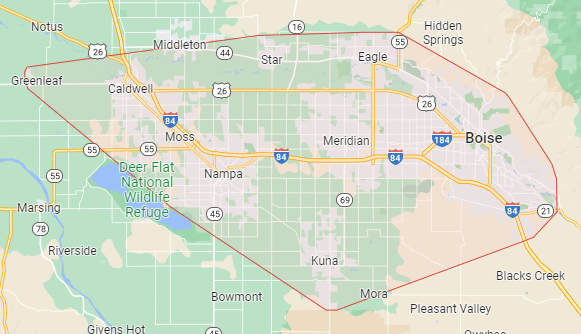Automobile manufacturers focus on bringing to market models that provide safety and comfort to the driver and other occupants. Whether you talk about the windshield glass or the airbags, these are all safety components fitted in a car or SUV to provide a high level of protection on the road. Likewise, Advanced Driver Assistance Systems (ADAS) sensors are also provided in vehicles to ensure safety and protection. Any modern automobile design has sensors as one of its most crucial safety components. The sensor technology has shaped automobiles now, and it will continue to shape cars and SUVs in the future as well.
With the use of ADAS sensor technology, the goal of car manufacturers is to eliminate the chances of collision as much as possible. At SIR Glass, we keep a close watch on the evolving sensor technology and how the present technology functions in order to ensure collision-free driving.
What is an ADAS System?
An ADAS system refers to a group of sensors that are fitted in a car or SUV to ensure safe driving. To help the driver, the sensors provide accurate information of what surrounds a car or SUV. Therefore, the system intends to reduce road accidents that lead to injuries and deaths.
Today, the ADAS system is increasingly used in every modern car and SUV to enhance driver performance and road safety.
Key applications of car sensors include pedestrian detection, lane departure warning, traffic sign recognition, automatic emergency braking and blind spot detection. The sensors use different types of advanced technologies, each of which performs a specific function. When combined with human machine interfaces, these sensors can perform a number of crucial functions such as detecting the obstacles closeby as well as driver errors and then respond instantly to ensure vehicle and road safety. Most car accidents happen because of human error. Therefore, the role of the car sensors is to alert the driver about safety issues.
The capabilities of an ADAS system are limited by the type of sensors it uses. You can expect these systems to evolve further and become more robust. One big way the ADAS system will evolve is through its integration with the connected vehicle using V2V (vehicle to vehicle) communication.
Car Sensor Technology Aims to Reduce Collisions
The ADAS sensor technology is specially designed to enhance vehicle safety by allowing cars and SUVs to respond in a similar way as a driver does. Right from detecting weather conditions to obstacles on the road, the technology enables cars to make real-time decisions.
Over 46,000 people lose their lives in car crashes every year in the U.S. alone. In fact, car crashes are the main cause of death in the country. Out of more than 6 million car accidents that happen in the United States every year, car sensor technologies prevent around 2.7 million collisions. The sensor technology used in cars continues to evolve. In a few years, you will have sensors that will help cars change their speed limit based on location and weather conditions.
The more a car can make autonomous decisions, the fewer car crashes and collisions we will have in the country. Reducing the number of accidents is exactly what all car sensor technologies aim to achieve.
Types of Car Sensors and Technologies
An ADAS system uses and collects data from not one but a number of different types of sensors. The detection done by all the sensors make it easy to know what is going on around a car or SUV at a certain moment. Using all the information by multiple sensors, it becomes easy for the vehicle to make an autonomous decision in a particular situation and then respond in a correct manner.
One ADAS system varies from another, depending on how many sensors it gathers data from in order to get an accurate view of the surroundings of a car or SUV. Here is a quick look at different car sensors.
Camera Sensors
ADAS camera sensors are a common safety feature fitted in today’s cars and SUVs. These sensors are available in multiple forms, based on the exact role they perform. The main function of these sensors is to detect objects around the vehicle. For example, the sensors will easily identify people and cyclists as well as other cars and vehicles that surround a particular car.
Any automobile manufacturer will have these sensors installed in today’s cars and SUVs. Without camera sensors, a vehicle will simply be blind to all the people and objects that surround it on the road. In fact, front-facing camera sensors are an essential safety feature that a car comes outfitted with. Applications of this car sensor technology include adaptive cruise control, lane departure warning, emergency braking, lane keeping assist and head-light high beam activation and dimming. The sensor first captures analog images and then converts them into digital data that is used by various safety systems installed in the car.
Usually, most cars have front-facing camera sensors. However, modern cars and SUvs come outfitted with 360-degree camera sensors. This means the multiple tiny camera sensors are placed at different sides of the car. Such cameras prove extremely useful for parking assistance and lane change.
Radar Sensors
These types of sensors are also a common part of an ADAS system. The main purpose of having these sensors is to reduce the chances of collisions while driving on the road. The radar sensor is designed using an advanced technology, which involves the use of radio waves and reflection of objects.
When in operation, the radar sensor first gives out radio waves that fall on objects and then get reflected back into the sensor. The object distance is measured by the time the waves take to return. After the data is processed by a computer, a 3D image of the surrounding area is created. Key applications of this car sensor technology include blind-spot monitoring, adaptive cruise control, forward collision warning and pedestrian detection. These sensors play a crucial role by identifying objects in the distance, particular when the visibility is limited due to rain or fog. As a result, the car sensors ensure safe driving in bad weather conditions.
Ultrasonic Sensors
Also referred to as sonar sensors, ultrasonic sensors are installed inside the front or rear bumper cover. Just like the name suggests, these car sensors use a sound wave technology to alert the driver.
Main applications of the ultrasonic sensors are parking assist and self-parking systems. The sensors use high-frequency sound waves to detect people, objects and other vehicles close to the car. When parking a car, the sensors identify whether the vehicle has been parked in a correct position. If the system finds out that the car’s parking position needs adjusting, it will either alert the driver or move itself into the correct zone using brake control. Ultrasonic sensors are also fitted as an essential component of the airbags system in a car or SUV.
Lidar Sensors
Lidar stands for Light Detection and Ranging. These car sensors function like a radar and use a technology that can detect small objects as well as calculate distances. If there are people closeby or the terrain is rough, the sensors will detect it and inform the system with a high level of accuracy.
The lidar sensor technology utilizes a vast number of photons to detect moving objects in real time. A pulsed laser enables the sensor to identify if there are small things or objects in the proximity of the car.
GNSS Sensors
The GPS or GNSS sensors enable a car or SUV to accurately locate where they are. While there are different types of sensors installed in a car, these sensors are specially known for giving highly precise information. The Global Navigation Satellite System (GNSS) is a combination of over 30 satellites that orbit the Earth. This is exactly how these sensors provide precise information on the positioning of a vehicle. The accuracy of the data increases as the number of working satellites increase at a given point of time. These sensors are a part of the ADAS camera system to find out the accurate position of a car in relation to surroundings.
The role of GNSS sensors is highly significant, as they enable a car or SUV to make real-time decisions based on the positioning data as received by the Earth-orbiting satellites. These sensors are quite advanced and certainly going to shape the future of completely autonomous cars.
What is Sensor Fusion?
The term sensor fusion refers to the combination of all the data provided by different types of car sensors. This means putting all the data gathered by the camera sensors, radar sensors, ultrasonic sensors, lidar sensors and GNSS sensors in one place to achieve one common goal – vehicle safety.
Each sensor uses a different technology to gather some specific data. Unless all the collected data is combined to inform the system, the automatic response may not have the highest level of accuracy. That is exactly why the sensor fusion system collects and filters all the data in an effective manner and then converts the same into digital form to inform the system. In short, the main goal of sensor fusion is to create a comprehensive picture of a car’s surrounding environment by providing highly accurate information from multiple dimensions. The technology enables the driver to safely navigate in heavy traffic areas and harsh weather conditions.
Each car sensor technology has its own pros and cons. If you want to find out more about how sensor fusion works and its benefits, feel free to get in touch with one of our experts at Sir Glass in Boise, Idaho.
Why You Need ADAS Sensor Calibration
Everytime the ADAS sensors are out of alignment, they need to be calibrated. If you want your car sensors to work correctly and provide accurate information, you should always keep them properly aligned.
Now that you have read so much about car sensors and the type of technology each sensor uses, you should never ignore their functioning. If you spot they have moved from their correct position, you should reach out to a trained professional for a close inspection and calibration. Usually, a car is involved in a collision or you get some adjacent repair work done, the ADAS sensors will need calibration. Most of all, you should never forget to get recalibration done after you have had an auto glass installation or auto windshield replacement. At SIR Glass in Boise, Idaho, we specialize in auto glass repair and car windshield replacement as well as calibration of all kinds and forms of sensors used in cars.
If the sensors of a car or SUV are not calibrated after adjacent repair work or windshield glass replacement, the ADAS system will fail to work in an efficient and accurate manner. It is important to keep an eye out for the signs of sensor misalignment and get it recalibrated without any delay.
Still Have a Question?
Sensor technologies play a vital role in enabling a car or SUV to make autonomous decisions as well as help the driver navigate dangerous situations in a safer manner. As a result of responding correctly at the right time, the sensors help bring down road accidents and collisions by a significant margin. If you plan to drive with enhanced safety on the road, you should never leave your car sensors misaligned. As soon as you spot any inaccuracy or signs of misalignment, you should reach out to one of our experts at SIR Glass for recalibration. We provide professional auto windshield repair, auto windshield replacement and ADAS sensors recalibration services in Boise, Nampa, Meridien, Eagle, Caldwell, Kuna, Star, etc.
For your free consultation with a highly trained technician, you can call our office phone number or send us an email.
One Comment
Leave A Comment
Auto Glass
Keep Your Vehicle Visually Intact - How to Choose the Right Auto Glass When it comes to protecting your car's exterior from everyday damage and even major crashes, auto glass plays an essential role. This
Cracked Windshield Repair
Cracked Windshield Repair: Step-by-Step Guide If you’ve recently gotten a cracked windshield, it may seem like an intimidating repair project. Before diving in head first and attempting to fix the issue yourself, take a step
Windshield Crack Repair
Windshield Crack Repair: How to Quickly and Effectively Repair Windshield cracks are unsightly eyesores that, if left untreated, can greatly diminish the value of your vehicle. But getting them repaired doesn't have to be a







Thank you for explaining to us that calibration is needed whenever the ADAS sensors are out of alignment and not working correctly if we want to be provided with accurate information. My cousin was involved in a small car accident the other day, and it seems like the sensors of his car have been out of it ever since. I’ll have to tell him to get ADAS calibration done by a trusted auto service as soon as possible.